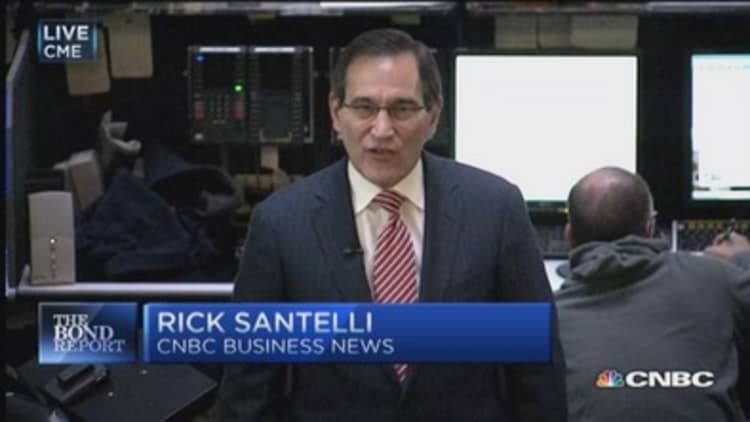The dollar tumbled on Tuesday, after five straight days of gains, as investors took advantage of weaker-than-expected U.S. retail sales to lighten hefty positions on the greenback that had built up due to expectations of an impending rate increase.
A second blow to the U.S. economic outlook came from the International Monetary Fund, which lowered its forecasts for U.S. growth to 3.1 percent for this year and next from January's expectations of 3.6 percent and 3.3 percent, respectively.
The yen, meanwhile, gained broadly, hitting a two-year high against the euro after an economic adviser to Japan's Prime Minister Shinzo Abe indicated that the currency might have fallen too far and needed to retrace some of its losses.
"I wouldn't be surprised if people bring down Q1 GDP forecasts on the data," said Marc Chandler, global head of currency strategy at Brown Brothers Harriman in New York.
"Couple that with the IMF stuff, and I think you have reason to trim (dollar) positions," he said.

The dollar's 3 percent surge last week set up a scenario ripe for cutting long-dollar positions, analysts said.
In late trading, the dollar index was down 0.7 percent at 98.745.
The euro, meanwhile, was last up 0.8 percent at $1.0653. However, concerns over Greece's ability to repay its debt by a month-end deadline limited the euro's gains.
After slumping to a two-year low against the yen, the euro rebounded to trade 0.2 percent higher at 127.15 yen.
On Tuesday, Yale University professor Koichi Hamada, an economic advisor to Prime Minister Abe, sought to clarify his comments on Monday that 105 yen was an acceptable level. He told Reuters he was referring to the yen's purchasing power parity-implied rate, not the spot market rate. Hamada said the dollar at 120 yen was acceptable.
Read More 4 ways to play a strong dollar as earnings begin
The dollar further shed gains after U.S. retail sales in March rose 0.9 percent, below a Reuters forecast of 1.0 percent. Core retail sales, which correspond most closely with the consumer spending component of the gross domestic product, grew 0.3 percent, slower than the 0.5 percent pace a Reuters poll expected.
"The trend in retail sales over the past three months has been extremely weak when looking at it in nominal terms but some of this weakness is caused by significant deflation in goods prices," said Signe Roed Frederiksen, senior analyst at Danske Bank, in Copenhagen.

